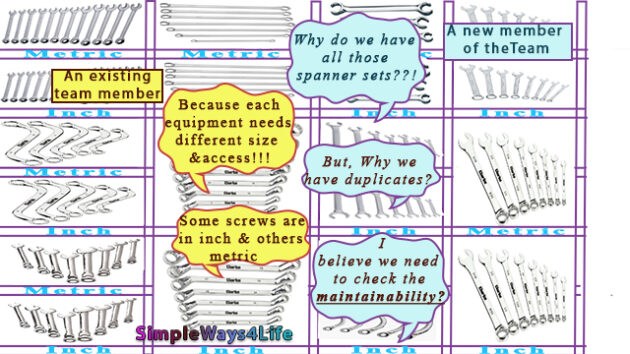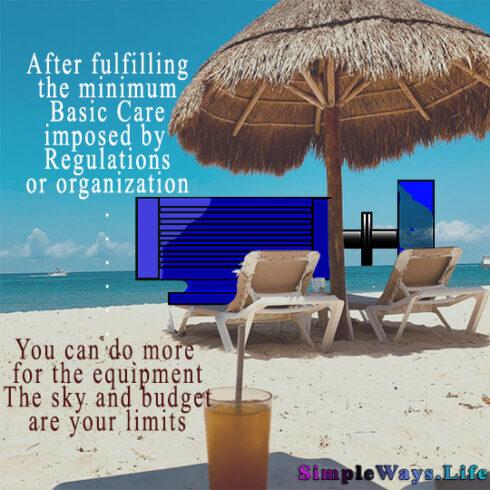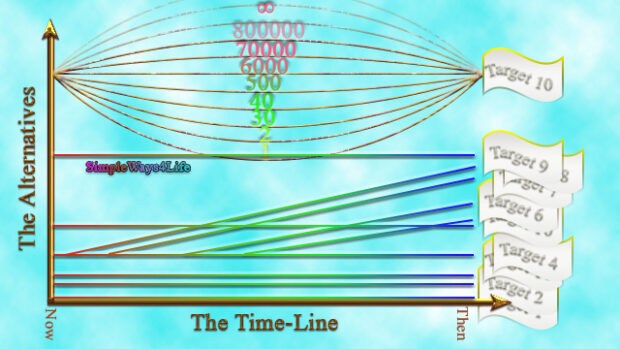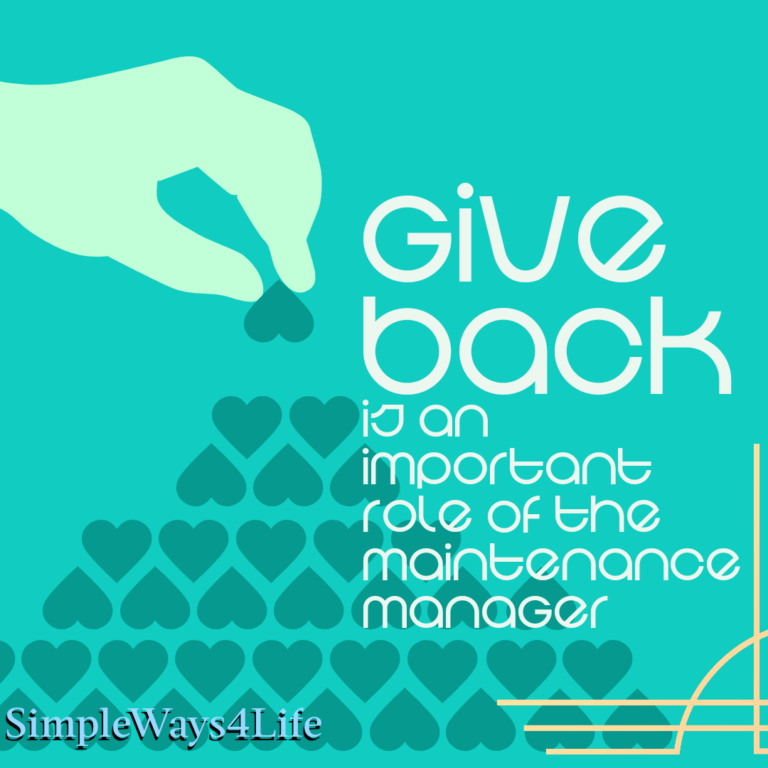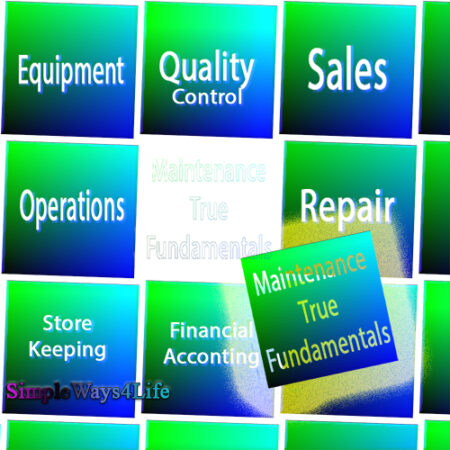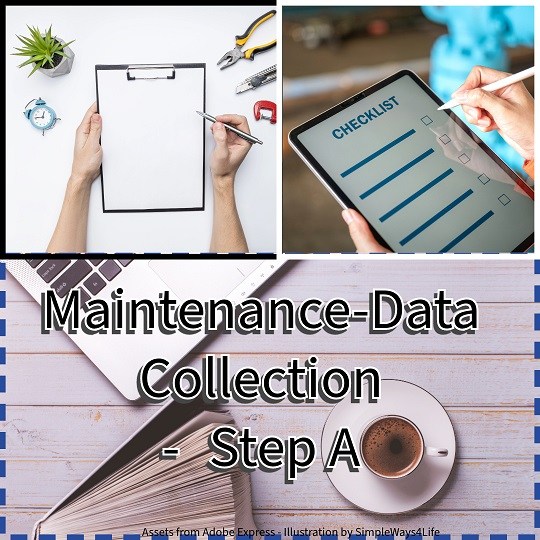Surely, if you have the chance to cross check the equipment against maintainability before placing a purchase order that’s a great advantage. Moreover, you may have the opportunity to join the design of the equipment. And, you consider the maintainability before the manufacturing or assembling process; That would be the best. Unfortunately, those cases are seldom.
But, what is maintainability?
It is the ability to perform needful maintenance and repair activities. This definition is a literal one. However the collective consciousness refers to maintainability as how easy is it to maintain the equipment performing its function satisfactory. Or, how easily the maintenance team can restore the equipment to a satisfactory working condition after a failure.
But are there some equipment that are intentionally unmaintainable?
It depends on the level of maintenance activities you intend to do. So, you may plan or have the capacity to repair electronic cards. Or, you may consider that replacing a doubtful electronic card is the limit of how deep your maintenance can go. I had seen few examples that intentionally can’t be maintained at site either for safety or for protecting the manufacturer knowhow. Most of the examples I had seen was in the electrical equipment range.
Some electronic cards are painted with insulation material, such that even if you have the skills to repair them, you can’t detect the parts’ types. Some software for microcontrollers are intentionally written that you can’t trace or modify them. Safety devices are sealed so opening them will violate the guarantee and warranty. Medium or high voltage breakers that cost tens of thousands of dollars mostly have no spares available for repair on the market. So, you need to return to the manufacturer for overhauling.
However you might willingly consider some of the equipment you have as However you might willingly consider some of the equipment you have as not feasible for maintenance by the local team. You might prefer to go for outsourcing some maintenance tasks that are not frequent and needs some special skills. Recruiting such team members with those special skills that you do not need frequently will increase the maintenance overheads. But, you need to mind if there are available vendors for those tasks at a close proximity.
How to check maintainability?
Usually, the maintenance team is thought of after the equipment are already procured. It is a common practice to involve the maintenance team in the preparation for the installation if it is not a green field project. Otherwise, in green field projects, they attend the installation and testing to get the sense of the equipment. Maybe during those times, you won’t intend to change the design of the equipment. But, you would think of safe and easy ways that your team can access the repairable parts of the equipment.
This can happen only if you have the knowledge of what maintenance tasks you need to do for each equipment. Either you have this knowledge from previous experience or you need to refer to the supplier manuals. Then, you need to let yourself imagine the task in execution. It is even better with your team. Try to gather the team and imagine the task under execution:
- How we can isolate the machine safely?
- Which parts of the machine I need to reach?
- Is it reachable from the ground?
- Do I need to remove some covers or disassemble some parts?
- Is a jib crane needed to support the disassembly?
- How heavy are the parts to handle?
- What tools do we need?
- Do I need special tools?
- If I am changing a bearing, is there some seals that I need to change as well?
- What are the needed spares?
- Where I can get those spares from?
- What are the frequency of the recommended maintenance tasks?
- Do we need special skills for those tasks?
Then we need to cross check those answers across all the different equipment and reach some conclusions about the maintainability of your assets.
What to look for in the answers of the maintainability checklist?
There are differences in driving conclusions about maintainability based on the scale of the industry. When you are making this review for one of the heavy industries the focus points differ from the medium industries or small business scale where you have 5 standard machines to produce plastics for example.
The optimum target is to reach the balance point between few main variables listed below:
First; The response time in case of a failure.
i.e. the time from failure occurrence till you can replace or repair the defective part. This includes
- the time for applying safety measures,
- dismantling auxiliary parts around the defective one,
- replacing or repairing,
- configuration if any, for cards and sensors
- assembling everything back and,
- testing and handing it over back to production
Second item to balance, how many different spares you need to keep
What we mean here by diversified items is the different variations of the same item. This can happen during the design stage. So you got the same sensor but with different number of output, different connection types, different size and so on. For the designer, they optimized the designed at each point and saved a couple of 100 USD’s between here and there. However, when you need to build a safety spares-stock ;That’s in case that your work place adopts this philosophy; You will be in a mess between the different types.
This example can go to a more expensive variations. If you remember our previous chat about the rolling process . Each stage of rolling needs a different power to deform the stock and a different speed. If you met a design where every motor of the 20 ones used has its own power and frame size. Then, think about the number of spares, you need to keep. Not only complete motors but the bearing and seals of different sizes and electrical switching and control. If you managed to reduce this number to 20 motors of 4 frame sizes then you need to keep spares for only those 4 sizes. This modification in the design may be tiring for the designer and will cost extra initial cost but it will reduce the risks, the spares and maintenance effort on the long run.
Same philosophy applies for valves, sensors, pumps, breakers, etc.
Third, how standard are your parts?
Maintainability does not govern the repair activities only but the availability of the spare parts used in this repair as well. How freely can you find spares or replacement for your spare parts. When the parts used are standard then you can go shopping for them freely. Also, your team will use common tools and procedures every time. Otherwise, the team need to think differently about the procedures needed to repair or replace different parts even of same function. Then confusion and consequently errors occur.
Fourth, What tools, skills and supporting equipment we need?
- By supporting equipment we mean lifting by means of a jib crane, overhead crane, or an external crane, or transportation of new and removed parts,
- Can one supporting equipment fit all usage?
- Do we need to rent one?
- Who will operate it?
- Is it all time available?
- tools for dismantling,
- Common tools
- Special tools
- How tools are stored and controlled for next job?
- Skills
- Alignment
- Assembly
- Understand assembly drawings, P&I, schematics, etc.
- literacy and math capabilities, languages
- PLC access, which brand? do we have multiple PLC brands?
Why we need to ensure that our assets are highly maintainable?
To minimize maintenance direct and indirect costs so profit is maximized and product pricing is competitive. Simply that’s the target behind any business unit. You can watch a short video about maintenance contribution to the OEE via this link.
In short beside the maintenance direct cost of the stored spares, manpower and tools, maintenance takes time. This precious operation time is either scheduled or abrupt. In both cases the maintenance or repair action need to take minimum time so production is retrieved at the earliest. When we improve the maintainability, we save cost and stoppage times. However, design for maintainability comes at an initial cost that can be easily justified by the savings you shall make along the equipment lifetime.
In Conclusion,
Design for maintainability comes at an initial cost that can be easily justified by the savings you shall make along the equipment lifetime.
The initial cost comes from design modifications, whenever possible, the unification of spares and, the preparation of necessary tools, skills, supporting equipment, outsourcing vendors and many other offline maintenance setup.
The savings comes from a lesser maintenance cost and more time available for production.
In case that we missed the design and installation phases, can we improve maintainability? That’s what we are going to speak about next.
If you feel you need help with any of these ideas we discussed, request a Management Consultancy or Coaching Services From our Store

